In this series of posts I will write about Africa’s herbivores. This will include everything from the big and well known animals like elephants, to the little duikers that are so often overlooked by people rushing to find bigger animals. Because this is a relatively large group I will write about the group rather than specific species (like I did with my post on big cats). I hope that you find the information about these beautiful animals as interesting as I do.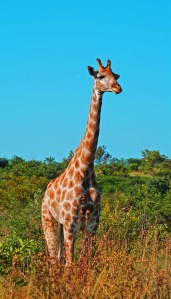
I would like to start with the by dividing the herbivores into groups. These groups are:
Elephants
Giraffe
Buffalo and antelope: African buffalo, kudu, blue wildebeest, gemsbok, waterbuck, grey duiker, springbok, suni, impala, klipspringer EST.
Hippos
Rhino and zebras
Now that you have a basic idea of where they fit in we are ready to start with everything else.
Horns
Many of the herbivores have horns, especially the antelope. In some cases they are very useful weapons for fighting and defence, like with buffalo or gemsbok. However other cases (like with kudu) the horns have very little use other than being the male’s way of displaying his physical superiority. If anything his horns will probably slow him down making him easy to catch and bring down.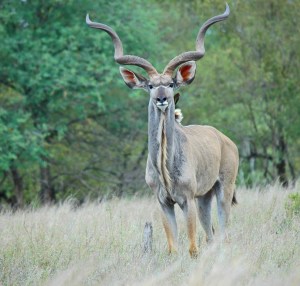
Strength in Numbers
Most herbivores live in herds for protection against predators. It is simple, the more eyes and ears there are, the better your chances of spotting the danger before it’s too late and the more animals the predators have to choose from the better your chances that they will choose someone other than you! It’s for a similar reason that all the herbivores give birth at the same time of the year. The predators can only kill so many young animals and so the majority of them will survive.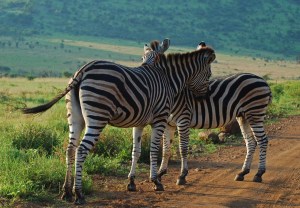
Signalling
Many animals have black or white markings on their rear ends so that members of their own species can follow them. This is especially important to herbivores that need to stay together while running from danger. Therefore most herbivores have stripes or circles on their backsides. 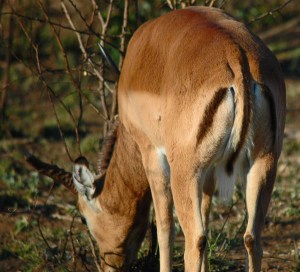
Grazers and Browsers
Herbivores can be divided into two basic groups namely grazers (grass eaters) and browsers (leaf eaters). Grazers include zebras, wildebeest, white rhino, hartebeest, springbok and buffalo. Browsers include kudu, nyala, giraffe, bushbuck and black rhino. Others like impala will mix feed. You can normally tell them apart from their lips. Grazers normally have strong and broad lips while browsers have thin and nimble lips.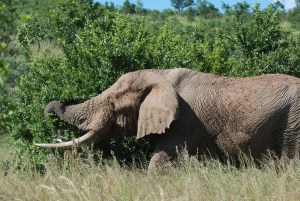
That is all for now. But keep an eye out for the next part in the series.
Good information. I liked the part especially about browsers and grazers with different lip shapes.